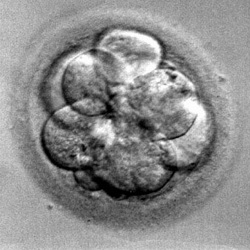If you are already frustrated after trying all possible means to get pregnant, don't despair as process IVF is available to help you.

As cases of infertility among women are steadily being discovered, the popularity of process IVF has also grown. In vitro fertilization or IVF has been the final resort in solving infertility issues among couples. This procedure is not immediately recommended or considered by doctors until all other fertility techniques have been tried and have failed.
Process IVF is specially designed to primarily help unproductive women suffering from major issues with their reproductive organs or system. An example of this is damaged fallopian tubes which make it is impossible for a woman to get pregnant. But with in vitro fertilization, pregnancy is still possible because fallopian tubes are bypassed making it feasible to conceive.
What is involved in Process IVF?
Process IVF involves four steps - follicle stimulation, egg retrieval, laboratory fertilization and embryo transfer. Let us consider each one of them.
Follicle Stimulation
Follicles are small sacs which house the egg cells inside the ovaries. Specially formulated pills, nasal sprays and injections are available and designed to stimulate the quantity of follicles that will ripen every menstrual cycle. The more ripened follicles your ovary has, the greater the chances of achieving pregnancy. Medications are usually ingested to aid in stimulating the ovaries to release mature eggs. You must discuss everything with your doctor and fully understand the time frame of taking medication stimulation protocols.
Egg Retrieval
A shot of human chorionic gonadotropin or HCG is usually given to mature the egg cells. Egg retrieval will then follow subsequent to a 36-hour interval when the HCG shot was given. Anesthesia will be administered prior and the whole process will occur under transvaginal ultrasound to help the doctor determine the appropriate spot to suck the follicles. The egg retrieval procedure entails minimal risk but abdominal cramping and light vaginal spotting is quite normal after the procedure. Infection rarely happens after the operation and recovery time lasts up to 2 hours.
Laboratory Fertilization
The retrieved eggs are then evaluated for maturity and kept in an IVF incubator. Your partner's semen will be analyzed first before combining it with your retrieved mature eggs. A special nutrient solution is used to wash the semen to separate more motile sperms. After which, they will combined with your eggs and fertilization will happen in the laboratory.
Embryo Transfer
Embryo transfer will rely on the quality and number of fertilized embryos. Oftentimes, the embryo transfer will follow after five days subsequent to fertilization. Usually, multiple embryos will be transferred into your uterus to enhance the possibility of pregnancy. Still, the number of fertilized embryos to be transferred into your uterus will depend on your age and quality of fertilized embryos.
Despite the favorable success rates of process IVF, it also posts some risks. Multiple babies often result from this process in addition to premature delivery. Besides, the medications being used during the process IVF also have some unpleasant and even harmful side effects. Make sure that you include these factors when discussing process IVF with your doctor.
